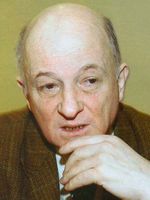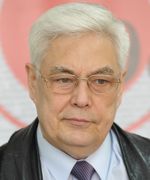A rally in support of the reunification with Romania was held in Moldova on May 16. The police estimated the demonstrators’ numbers at 3,000. Shouting anti-Russian slogans “Farewell, Russia! Do not forget that Bessarabia is not yours!” they marched through the central square of Chisinau to the parliament’s building. They carried in their hands flags of the EU, Moldova, and Romania, as well as banners inscribed “Greater Romania – the ancient boundaries.” On reaching the Russian embassy, the demonstrators began to sing the national anthem of Romania and urged the Kremlin to withdraw Russian troops from Transnistria.
The rally was organized to mark an anniversary of the signing of the 1812 Treaty of Bucharest. The treaty provided for the territory of Bessarabia, located between the Prut and Dniester rivers, to be transferred to the Russian Empire.
According to AP, it was the Action 2012 Civic Platform that organized the rally.
On the eve of the demonstration, the Action 2012’s leader George Simion, a Romanian citizen, was expelled from and banned entry to Moldova for five years. The authorities allege that he “organized actions aimed at overthrowing the constitutional order in the country,” according to web portal Publika.md.
The Day asked a Moldovan and a Ukrainian expert to comment on the rally held by the Action 2012.
Oazu NANTOI, political analyst, Chisinau:
 “If you look at the results of the parliamentary elections held from 1994 and into the present day, you will see that no political party that called for the unification of Moldova and Romania ever surpassed the election threshold, set variously at four to six percent. We have the National Liberal Party in the Republic of Moldova, which is the most visible force preaching the idea of the reunification with Romania. This party’s vote has fluctuated in the 0.4 to 0.6 percent range.
“If you look at the results of the parliamentary elections held from 1994 and into the present day, you will see that no political party that called for the unification of Moldova and Romania ever surpassed the election threshold, set variously at four to six percent. We have the National Liberal Party in the Republic of Moldova, which is the most visible force preaching the idea of the reunification with Romania. This party’s vote has fluctuated in the 0.4 to 0.6 percent range.
“A certain percentage of our public has always supported the idea of unification with Romania, but factually speaking, they have always been a minority.
“No faction in the parliament of Moldova supports the unification with Romania.
“The Ottoman-Russian treaty of May 16, 1812 provided for the territory of Bessarabia, located between the Prut and Dniester rivers, to be annexed by the Russian Empire, and thus cut off from the rest of the historical Moldova. This Moldovan remnant participated in the creation of the Romanian state a half century later. Therefore, this rally was quite noticeable. Russian TV channels normally gloat about this, saying that Romanian nationalists have come to power. The Russian fifth columnists, like the Socialist Party, are hysteric about it as well.”
Serhii PYROZHKOV, former Ambassador of Ukraine to Moldova, Kyiv:
 “There is nothing new and unexpected here. However, there is a dedicated group there now, the Action 2012, which stands for the unification with Romania. This is a political grouping lacking broad support among the general population. They often hold such public events to declare that integration into the EU would come easier under the umbrella of Romania through the reunification of ethnic Romanians. It is just a small part of the political scene that actually stands for unification with Romania. Such groupings generally exist for a few years and occasionally remind of themselves. I would not be focused on the number of protesters, but rather on the very fact that this event took place.
“There is nothing new and unexpected here. However, there is a dedicated group there now, the Action 2012, which stands for the unification with Romania. This is a political grouping lacking broad support among the general population. They often hold such public events to declare that integration into the EU would come easier under the umbrella of Romania through the reunification of ethnic Romanians. It is just a small part of the political scene that actually stands for unification with Romania. Such groupings generally exist for a few years and occasionally remind of themselves. I would not be focused on the number of protesters, but rather on the very fact that this event took place.
“Now to the slogans reading ‘Greater Romania – the ancient boundaries,’ reported by AP. Former Romanian President Traian Basescu made public statements to this effect once, but over time, and particularly with Moldova getting its visa-free travel regime with the EU, the slogan is no longer relevant. I do not think that such calls seriously affect the development of the political situation in Moldova.”







